
Shade netting reduces sun damage, but it can also cut into color development for early harvesting apples such as Honeycrisp.
In response, the managers at Monument Hill Orchards in Quincy, Washington, have decided to take down the shade netting shortly before harvest to boost color — a move that also risks setting up the shade-acclimated fruit for sun damage.
To understand the pros and cons of that decision, Monument Hill invited Lee Kalcsits, the endowed chair of environmental physiology at Washington State University, to study the trade-off and the optimum timing in their orchard.
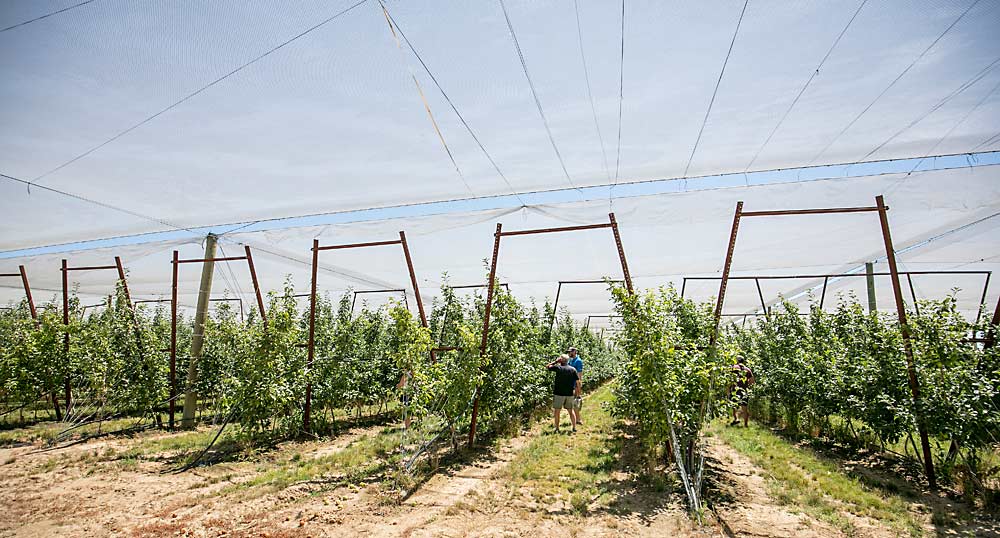
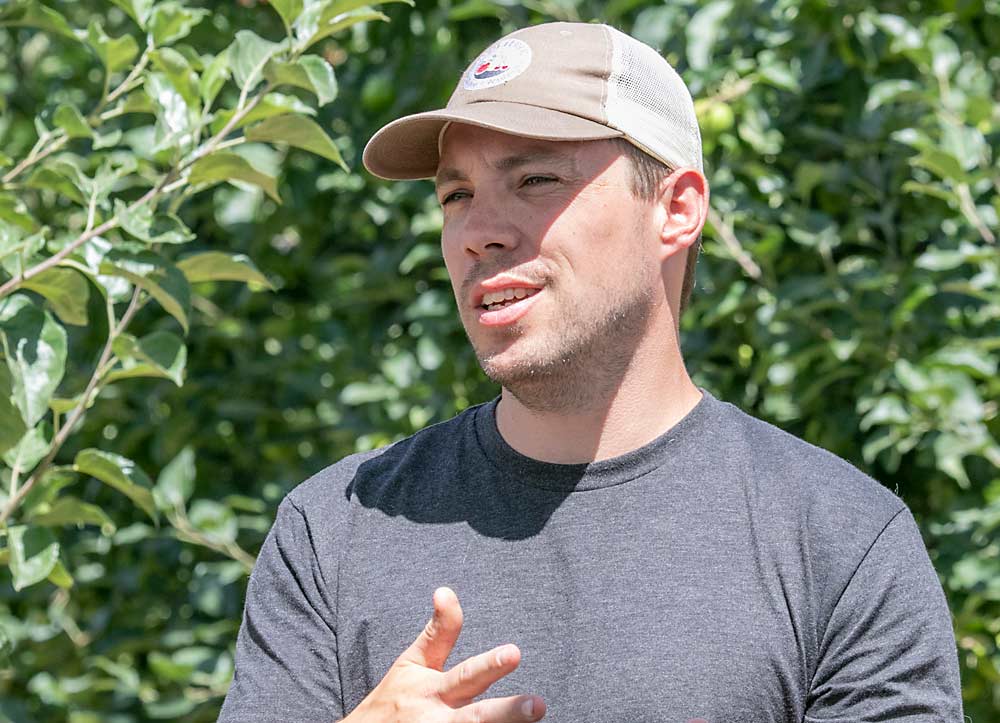
“The idea is that we get protection from the nets, from hail and from heat during the key parts of summer, and then when nights and days are cooled down, when color development is so important, pulling the nets back and get the benefit of that whole sunlight,” he said.
Kalcsits shared preliminary findings of his research with growers when the International Fruit Tree Association’s summer tour visited Monument Hill in July. It only takes seven days without nets to get color benefits — boosting the average red coverage by over 10 percent — but he saw no additional gains from 14 days.
That’s good news for growers juggling competing labor demands and looking for a favorable forecast window to uncover the fruit.
On the flip side, “by retracting the nets, we did see an increase in sunburn by about 3 percent,” Kalcsits said, similar in both seven- and 14-day periods. “So, I think the benefits of color development outweigh the sunburn, but each year is going to be a little bit different.”
For example, a 95-degree day while the nets are retracted increases the risk for sunburn, he said. For fall-harvesting varieties, the risk may be lower, but for earlier varieties, overhead cooling may also be needed while the nets are retracted. Kalcsits is also studying that option at a WSU-owned orchard.
But what if you could put the nets up again if the forecast changed? At Monument Hill, that’s not really feasible, said Tom Gausman of AgriMACS, the farm management company. Workers on scissor lifts must put up and take down the panels, which takes time and costs about $250 per acre each way.
McDougall and Sons has also been navigating this netting conundrum, and co-owner Scott McDougall shared his experiences with the IFTA tour when the bus stopped at one of his Quincy-area orchards featuring nets that crews can retract and replace with a system of pulleys.
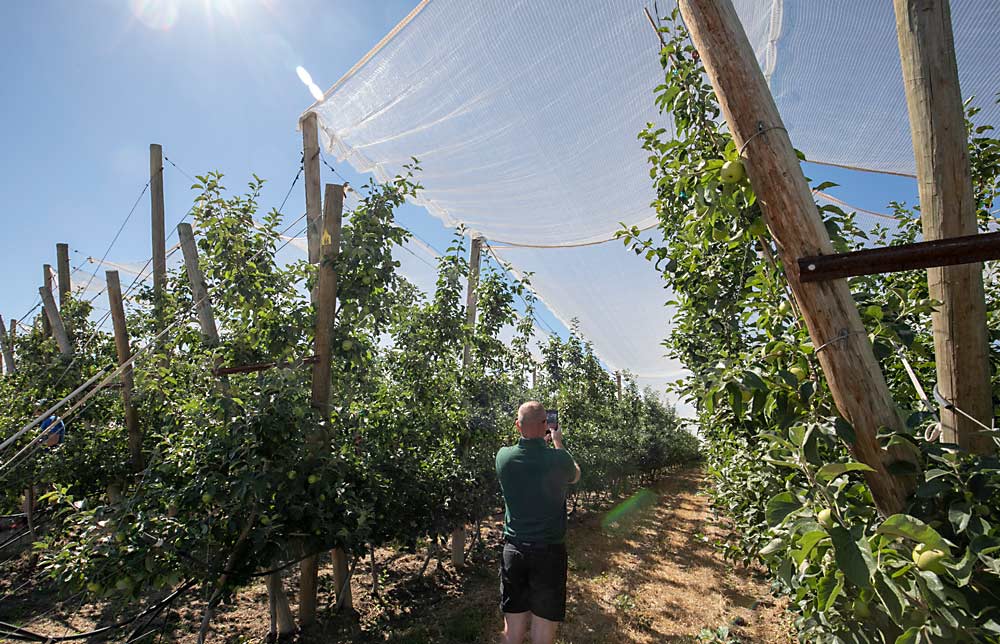
“It’s evolved to this retractable netting because our first netting, we called it the big top, we had to reserve scissor lifts to put them up and it was so laborious to take them back down,” he said. Also, with the earlier systems, “we had no sunburn, but we also had no red color.”
Retrofitting the sixth-leaf Honeycrisp orchard with the retractable system cost about $14,000 per acre, said area manager Dave Chism, with almost a third of the price being labor needed to dig posts by hand under existing trees and install the posts over the existing trellis. “If this would have been installed when you were installing the initial trellis system, you wouldn’t have had all this extra labor involved,” he said.
Now that it’s in, however, the system reduces the time and labor needed to retract the nets. Now, three people can open all the panels on the 11-acre block in nine hours, said Martin Gil, the orchard manager. Pulling back nine panel sections at a time seems to be the sweet spot, he said.
“So, the ideal situation would be two weeks ahead of harvest, to pull (the nets) as soon as we get a break in the weather,” Chism said. They also put out the reflective ground cover to quickly get good color. “But then if the weatherman changes, like he always does, and you get another heat wave coming back, we could quickly extend and cover back up with this system.”
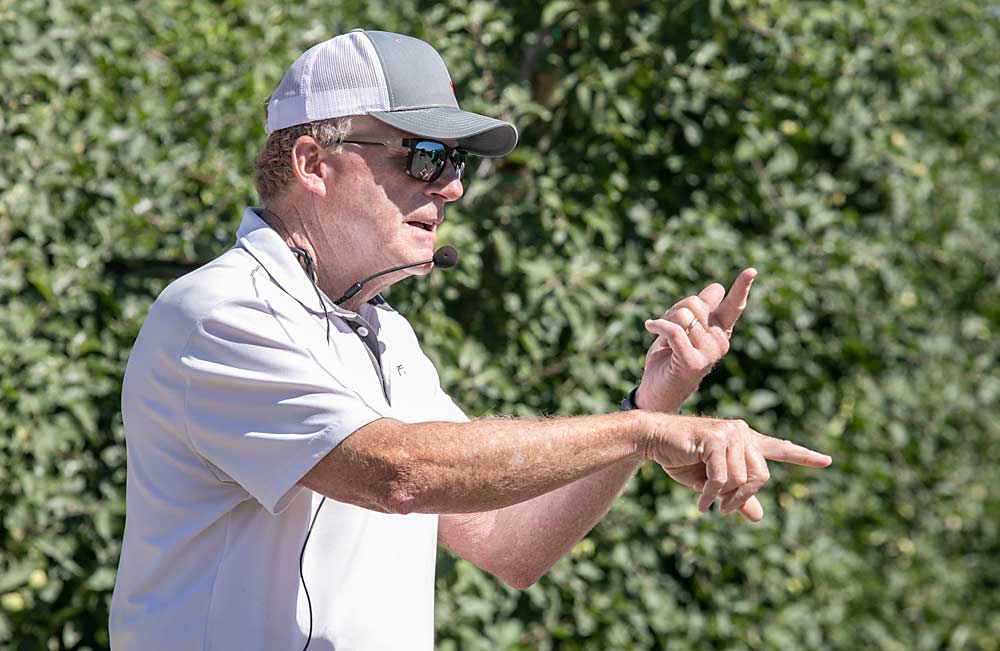
That’s particularly important for this block of Premier Honeycrisp, which typically harvests in mid-August.
McDougall said if he were to put the system in today, he’d likely include foggers so he would feel more comfortable with retracting the nets — and he still may add them.
“If you are really going to do the job, I think you need to probably have a double system,” he said.
At Monument Hill, that’s exactly what they did with their Premier Honeycrisp, Gausman said.
“Now, when we pull the net off, we can protect it with some fogging, and we’re hoping that we can get the advantage of both,” he said.
Kalcsits’ research, supported by the Washington Tree Fruit Research Commission, continues this season.
—by Kate Prengaman

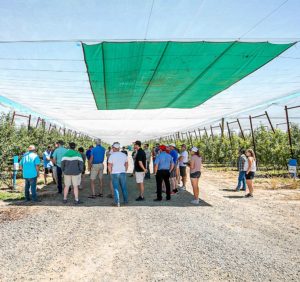
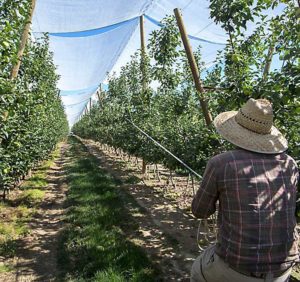





Leave A Comment